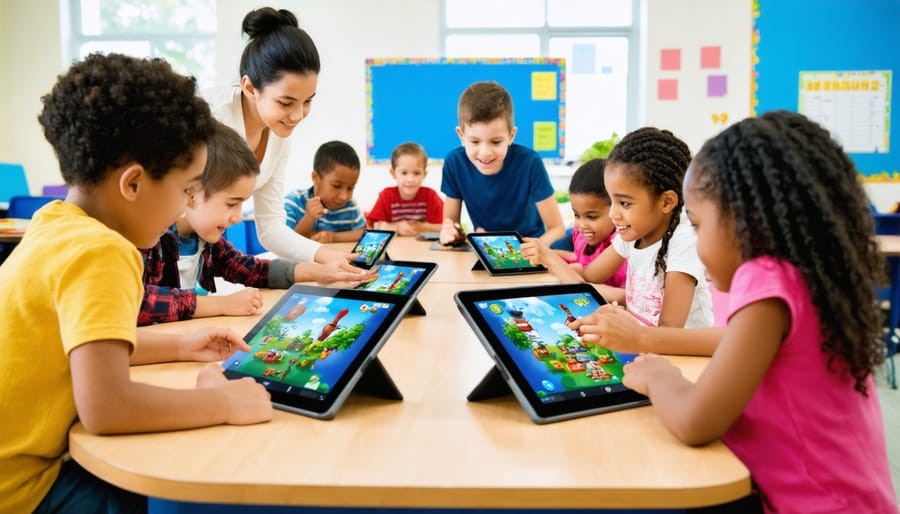In an era increasingly defined by digital immersion and the ubiquitous presence of screens, the traditional modes of learning, often perceived as static or purely didactic, face a growing challenge in capturing and sustaining attention. Yet, within this very digital landscape lies a powerful, often underestimated, tool for knowledge acquisition: educational games. Far from being mere distractions or simplified diversions, well-designed educational games harness the innate human drive for play, challenge, and reward, transforming the learning experience from a passive consumption of information into an active, engaging, and profoundly effective journey. Using educational games for “smarter learning” is not about replacing traditional methods entirely, but rather about strategically integrating them to leverage their unique capacity to foster deeper understanding, enhance problem-solving skills, and significantly boost memory retention.
The fundamental principle behind the efficacy of educational games lies in their ability to promote active learning and experiential engagement. Unlike reading a textbook or listening to a lecture, games demand interaction. Learners are not just observers; they are participants, making decisions, solving problems, and experiencing immediate consequences of their actions. This active participation forces the brain to process information more deeply, creating stronger neural connections. Consider a simulation game designed to teach economic principles: a player might manage a virtual city’s budget, allocate resources, and observe the direct impact of their fiscal policies on unemployment or inflation. This hands-on experience, far more impactful than theoretical explanations, embeds concepts through direct application, fostering intuitive understanding rather than rote memorization. The iterative nature of games, where learners can try, fail, and try again in a low-stakes environment, further reinforces learning through repeated, purposeful engagement.
Beyond mere activity, educational games excel at providing instant feedback and adaptive learning pathways. In traditional settings, feedback on understanding often comes delayed, sometimes days or weeks after an assessment. Games, however, offer immediate reinforcement or correction. A wrong answer or an ineffective strategy in a game is met with instant feedback, prompting the player to re-evaluate and adjust their approach. This rapid feedback loop is crucial for solidifying correct understanding and correcting misconceptions before they become entrenched. Furthermore, many sophisticated educational games adapt to the learner’s progress, adjusting difficulty levels or introducing new challenges as mastery is demonstrated. This personalized pacing ensures that learners are consistently challenged but not overwhelmed, keeping them within their optimal zone of proximal development. For instance, a language learning game might identify specific vocabulary words a user consistently struggles with and then present those words more frequently in varied contexts, providing targeted practice that a static curriculum cannot.
Moreover, educational games are exceptionally adept at cultivating problem-solving skills and critical thinking. Most well-designed games present learners with a series of challenges or puzzles that require strategic thinking, planning, and often, creative solutions. These aren’t just about recalling facts but about applying knowledge in novel situations. A game focused on historical events might require players to make decisions as a historical figure, considering the complex variables and potential outcomes, thereby fostering a deeper appreciation for the nuances of historical context. A game designed to teach physics might challenge players to construct a bridge or launch a projectile using realistic physical properties, forcing them to apply principles of force, gravity, and trajectory. This immersive problem-solving environment translates abstract concepts into practical applications, sharpening analytical abilities and encouraging innovative thought processes that extend beyond the game itself.
Another significant advantage of educational games lies in their ability to enhance motivation and sustained engagement through gamification elements. Features like points, badges, leaderboards, levels, and narrative progression tap into our innate desire for achievement and recognition. The inherent challenge and reward structure within games make the learning process itself enjoyable, transforming what might otherwise be perceived as tedious study into an intrinsically motivating activity. The pursuit of unlocking the next level, earning a high score, or collaborating with peers in a virtual environment provides a powerful incentive to persist through difficult material. This sustained engagement, fueled by a sense of accomplishment and progression, directly combats the common issue of learner disengagement, leading to longer study durations and more consistent effort over time.
Finally, effective educational games facilitate transfer of learning and application in real-world contexts. The ultimate goal of learning is not just to acquire knowledge but to apply it meaningfully. By simulating real-world scenarios and requiring learners to make decisions within those contexts, games bridge the gap between theoretical understanding and practical application. A business simulation game, for example, allows aspiring entrepreneurs to manage a virtual company, making decisions about pricing, marketing, and human resources, and observing the financial outcomes without real-world risk. This safe environment for experimentation allows learners to build confidence and develop intuitive problem-solving skills that are directly transferable to professional or academic challenges. This pragmatic application of knowledge through simulated experiences is a hallmark of smarter learning, ensuring that acquired insights are not just remembered, but truly understood and actionable.
In conclusion, educational games are far more than supplementary tools; when thoughtfully integrated into learning strategies, they become powerful catalysts for smarter, more profound knowledge acquisition. By fostering active engagement, providing instant and adaptive feedback, sharpening critical thinking skills, enhancing motivation through gamification, and facilitating the transfer of learning to real-world scenarios, these interactive experiences transform the very nature of education. Embracing educational games as a legitimate and effective learning methodology is not just about keeping pace with digital trends; it is about unlocking a richer, more engaging, and ultimately more effective pathway to deeper understanding and lasting intellectual growth.





